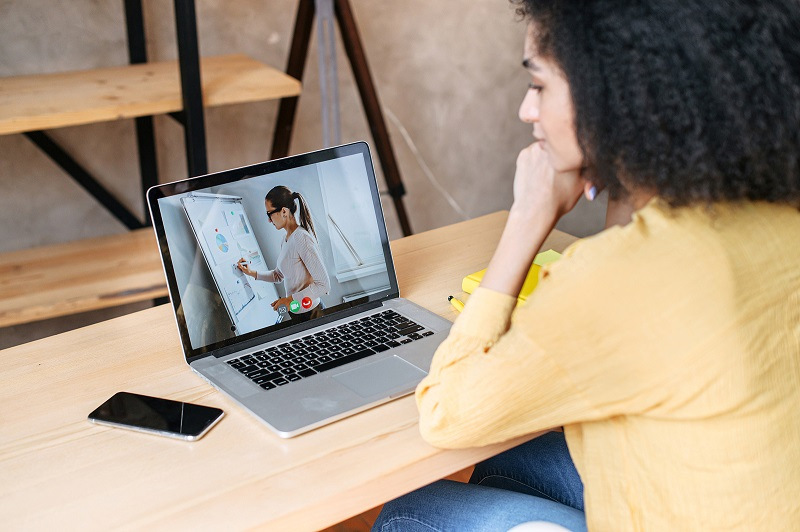ATD Blog
The Secret to Breaking Down Resistance to Virtual Instructor-Led Training
Thu Aug 26 2021

Virtual instructor-led training (VILT) is easier to deploy, more cost effective, efficient, inclusive, and often produces better learning outcomes than traditional physical classroom training. It’s also better for the environment.
Yet VILT meets resistance from leaders, learners, and trainers because in the past the experience has been excruciating. Few people haven’t had the pleasure of sitting through agonizing VILT sessions. Death by voice over a PowerPoint delivered by a disengaged or clueless instructor has a bitter flavor.
The brutal truth is that with VILT, learner experience matters more than anything. Not the quality of the curriculum or content. Not the talent of the trainer. The experience.
At Sales Gravy, we began our journey to deliver a better virtual learning experience with this basic acknowledgement:
In terms of emotional and social experience, nothing outweighs training and learning in a physical, dynamic classroom. Human interaction, collaboration, emotional connections, and social learning reach their apex in this environment.
Therefore, to improve the virtual learning experience, our driving focus was to create as close a facsimile to in-classroom training as possible.
First, consider your experience with traditional, old-school virtual training:
The primary visual focus are PowerPoint slides and screen shares (typically difficult to read on screen and heavy on bullet points).
The trainer rarely, if ever, shows their face on screen.
The participants rarely see each other and avoid being seen as much as possible.
The teaching modality is voice-over slides.
There is minimal interaction between the learners and the trainer and among the learners.
Learners rarely interrupt when they have questions or disagreements.
Because the trainer cannot see the participants, they are less likely to stop the presentation and ask questions that pull concerns to the surface based on a learner’s nonverbal expressions.
Audio and video quality (if the trainer dares show their face) is poor.
There is little on-screen movement or variety to keep learners engaged and visually involved.
Now, consider the elements of a dynamic physical classroom experience:
The visual focal point is the trainer.
Slides and visuals are in the background (typically projected on a screen).
Participants can see the trainer’s facial expressions and body language as the trainer teaches, which provides context and additional meaning to words, language, and voice inflection.
The trainer’s movement, in front of the class and as they walk around and interact with students, keeps learners engaged.
Learners can see each other and are more likely to form emotional bonds and feel part of a shared experience. Social learning is maximized.
Participants are more comfortable interrupting and asking questions when they don’t understand or disagree.
The trainer can see the participants’ body language and respond to unspoken questions, confusion, or disagreement and pull these issues to the surface for conversation.
Training delivery is dynamic, fluid, appropriately nonlinear, and interactive.
Learning is accomplished through breakouts, role-plays, interaction, conversation, laughter, and debate.
Designing a new VILT experience that closely mimicked that of a physical classroom required us to rethink almost everything about how virtual training had been traditionally produced and delivered.
We reimagined the onscreen video experience and placed a premium on purpose-built virtual training sets along with production and switching technology to give the virtual classroom the look and feel of a live television experience.
We also focused on human elements that included getting trainer’s faces on screen and standing up as well as creating safe, interactive, engaging virtual classroom environments.
Finally, we tackled course design. We rebuilt visuals and media for onscreen consumption, resequenced curriculum elements to optimize learner engagement, optimized session length, integrated dynamic breakout rooms, and leveraged the learning management system to extend learning beyond the virtual classroom and improve communication.
It worked. The moment learners and their leaders entered our new virtual classroom sets you could see them mouthing “WOW!” We noticed:
Participants were more engaged and showed up to class enthusiastic to learn.
Learning outcomes improved and outpaced physical classroom training.
Trainers enjoyed their work and gained fulfillment from making an impact.
Leaders booked more virtual training sessions.
Organizations more readily blended and integrated VILT into learning and development initiatives.
The secret to gaining widespread acceptance for virtual training is delivering a legendary virtual learning experience. We created an experience that was so different from the low expectations that most people had for virtual training that it immediately changed perceptions and our VILT booking exploded.
You've Reached ATD Member-only Content
Become an ATD member to continue
Already a member?Sign In

